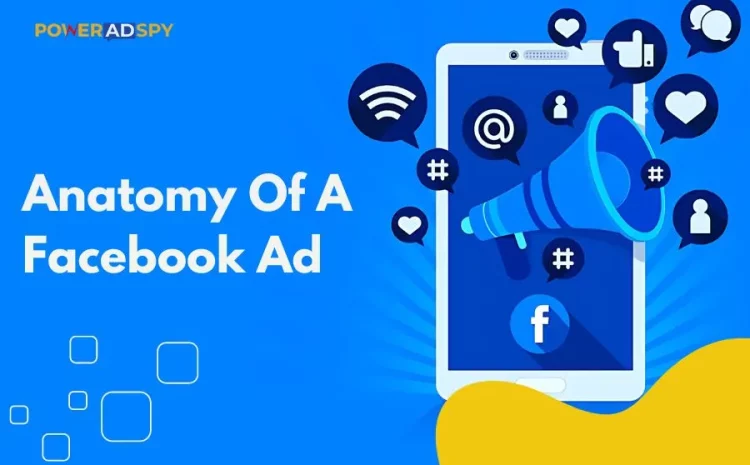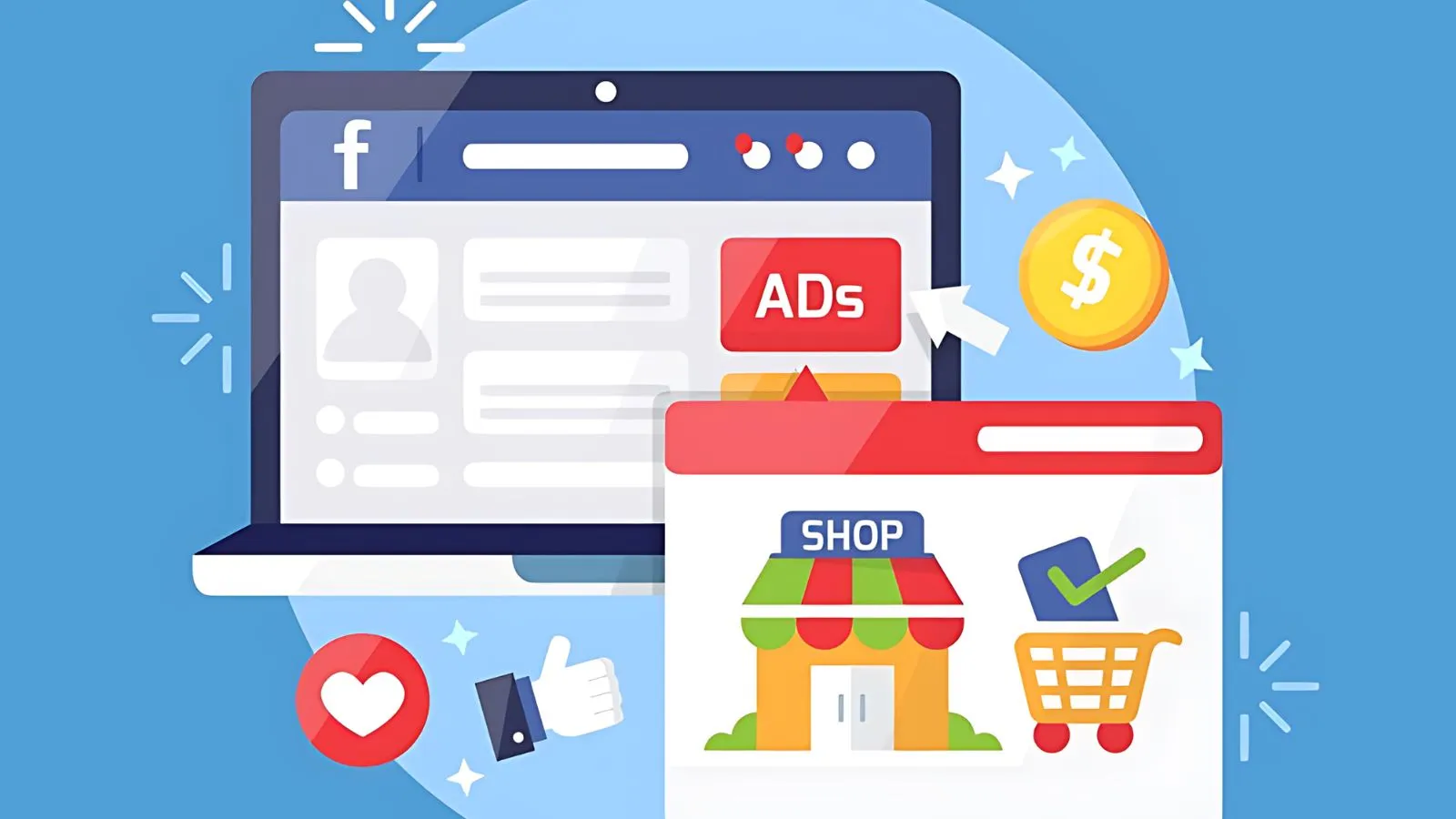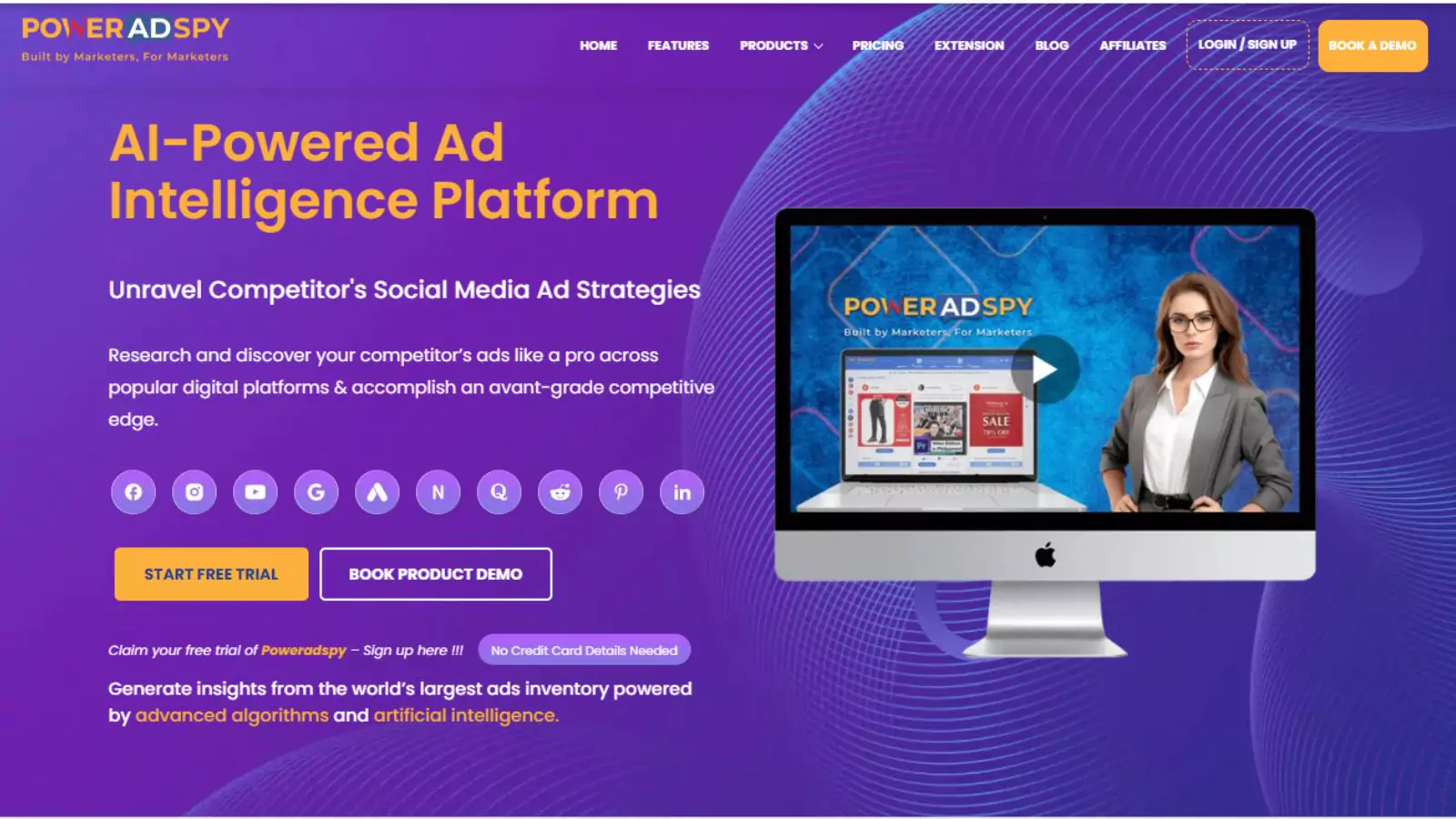Anatomy Of A Facebook Ad: A Complete Guide
Facebook Ads are a powerful tool for reaching a targeted audience and achieving your marketing goals. To maximize their potential, it’s essential to understand the anatomy of a successful Facebook ad. Each component, from the headline and ad copy to the visuals and call-to-action, plays a critical role in grabbing attention and driving conversions.
A well-crafted headline draws in your audience, compelling ad copy keeps them engaged, and eye-catching visuals make your message memorable. Finally, a strong call-to-action motivates your audience to take the next step, whether visiting your website, signing up for a newsletter, or conversion.
In this comprehensive guide, we’ll cover everything you need to know about the anatomy of a Facebook ad. Stay with us, and let’s get started!
Listen To The Podcast Now!
What Is Anatomy Of A Facebook Ad
The anatomy of a Facebook ad refers to the key elements that come together to form a complete and effective advertisement. It is like the building blocks to grab attention, convey your message, and drive results.
Let us dissect the anatomy of a Facebook ad and explore the key components that make it a conversion machine.
Anatomy Of A Facebook Ad: 4 Components
A well-structured Facebook ad is like a well-oiled machine – each element works together to achieve a specific objective. Here is a breakdown of the primary components that form the anatomy of a Facebook ad:
1. The Visual: Capturing Attention in an Instant
Visuals are one of the main components of the anatomy of a Facebook ad. The first thing users spot while scrolling through their Facebook feed is the visuals. So, it is crucial to choose an eye-catching image or video that grabs attention and effectively communicates your message. Following are some tips for selecting the perfect visual:
- High-Quality Images/Videos: Grainy or blurry visuals will turn users away. Use professional-looking images or engaging videos that showcase your product or service in its best light.
- Relevance to Your Offer: The visual should directly connect to the product or service you are advertising. Avoid stock photos that feel generic and fail to resonate with your audience.
- Emotional Connection: Elicit an emotional response from viewers. It could be a feeling of happiness, excitement, curiosity, or even urgency.
2. The Text: Crafting Compelling Copy
The text accompanying your visual plays a vital role in explaining your offer and prompting users to take action. Here are the key components of Facebook ad text you should focus on:
- Headline (25 characters): This is your first impression, so make it count. Craft a clear and concise headline that piques user interest and accurately reflects your offer.
- Primary Text (up to 125 characters): This is your chance to delve deeper into your value proposition. Use this space to showcase features, benefits, and unique selling points.
Crafting The Perfect Facebook Ad Description
The anatomy of a Facebook ad involves writing an effective ad description an art and a science. Here are some tips to help you craft descriptions that convert:
- Focus on Benefits: Highlight what users will gain from your product or service. Use language that speaks directly to their needs and desires.
- Use Persuasive Language: Incorporate persuasive words and phrases that evoke emotion and urgency, such as “limited time offer” or “exclusive deal.”
- Keep It Concise: Facebook ads have limited space, so make every word count. Aim for clarity and brevity, avoiding unnecessary jargon or filler words.
- Incorporate Keywords: Use relevant keywords naturally within your description to improve ad relevance and performance.
3. The Call to Action (CTA):
A clear call to action (CTA) is an essential part of the anatomy of a Facebook ad for driving conversions. Tell users exactly what you want them to do after seeing your ad, whether visiting your website, downloading an ebook, or making a purchase. Here’s what to consider when crafting your CTA:
- Strong Verbs: Encourage clicks by using action verbs like “Shop Now”, “Learn More”, or “Sign Up”.
- Specificity: Instead of a generic “Click Here,” tailor your CTA to the specific action you want users to take.
- Sense of Urgency: Consider including limited-time offers or scarcity elements to create a sense of urgency and motivate users to act now.
We have covered the anatomy of a Facebook ad in detail. By understanding the various parts of a Facebook ad, you can optimize your campaigns to capture attention and boost conversions effectively. Now, let us discuss different types of Facebook ads.
Types Of A Facebook Ad
There are two main aspects to understand beyond the anatomy of Facebook ad formats and placements. Ad formats refer to the different ways you can design your ads, while ad placements refer to where your ads appear on Facebook and its partner platforms.
Let us delve deeper into these aspects to help you make informed decisions when setting up and creating your Facebook ads.
1. Ad Formats
Ad formats refer to multiple ways you can present your ads on Facebook. Each format serves a distinct purpose and can be used to achieve various objectives, from increasing brand awareness to driving conversions. Here are the main ad formats involved in the anatomy of a Facebook ad:
2. Image Ads
Image ads are the most straightforward ad format, consisting of a single image. They are ideal for showcasing products, promotions, or branding messages. These ads are simple yet effective, as they can quickly capture attention with high-quality visuals.
Best For: Brand awareness, product highlights, promotions.
Tip: Use high-resolution images and minimal text to make a strong visual impact.
3. Video Ads
It engages users with dynamic content, making them highly effective for storytelling and demonstrations. Videos can range from short clips to longer, in-depth content. Incorporate videos in the anatomy of a Facebook ad and get the best results.
Best For: Product demonstrations, storytelling, brand engagement.
Tip: Capture attention in the first few seconds and include subtitles for viewers watching without sound.
3. Carousel Ads
Carousel ads let you feature up to ten images or videos within a single ad. Users can scroll through the carousel to view each element. This format allows you to showcase multiple products, features, or a step-by-step process effectively.
Best For: Product catalogs, multiple features, storytelling in sequence.
Tip: Ensure each card in the carousel is visually appealing and includes a compelling call to action.
4. Slideshow Ads
Slideshow ads combine multiple images, text, and sound to create lightweight video ads. These ad formats optimize the anatomy of a Facebook ad. They are a great alternative to video ads if you want to create engaging content without the need for video production.
Best For: Brand stories, product showcases, promotions.
Tip: Use high-quality images and clear, concise text to convey your message effectively.
5. Collection Ads
Collection ads offer a unique shopping experience by allowing users to browse a catalog of products directly from the ad. These ads start with a cover image or video followed by product images.
Best For: E-commerce, product launches, and promotional campaigns.
Tip: Highlight best-selling or new products in the cover image or video to attract attention.
6. Instant Experience (Canvas) Ads
Instant Experience ads (formerly known as Canvas ads) provide an immersive, fullscreen experience that loads instantly when users interact with the ad. They can feature images, videos, carousels, and text.
Best For: In-depth storytelling, detailed product showcases, interactive content.
Tip: Use the interactive features to engage users and provide a seamless experience from the ad to a landing page.
2. Ad Placements
Ad placements are where your ads appear on Facebook. Facebook offers a variety of placement options to maximize your ad’s reach and impact. Here are the primary ad placements available:
1. Facebook News Feed
Facebook News Feed ads appear in the main feed where users scroll through posts from friends, family, and pages they follow. This placement is prominent and can generate high engagement rates.
Best For: General awareness, engagement, conversions.
Tip: Use eye-catching visuals and compelling headlines to stand out in the feed.
2. Facebook Right Column
Facebook Right Column ads appear in the right-hand column of the desktop site. These ads are smaller and less prominent but can be cost-effective for reaching your audience.
Best For: Brand awareness, retargeting campaigns.
Tip: Keep your ad simple and direct, focusing on a strong visual and clear call-to-action.
3. Facebook Marketplace
Facebook Marketplace ads appear in the Marketplace section where users buy and sell items. This placement is ideal for businesses targeting shoppers actively looking for products.
Best For: E-commerce, product promotions.
Tip: Highlight special offers or unique products to capture shoppers’ interest.
4. Facebook Stories
Facebook Stories ads appear between user stories and are full-screen vertical ads. They offer an immersive experience and can be highly engaging.
Best For: Brand stories, limited-time offers, interactive content.
Tip: Create visually appealing, short, and engaging content that fits the vertical format.
5. Instagram Feed
Instagram Feed ads appear in users’ Instagram feeds and are visually similar to regular posts. This placement leverages Instagram’s highly visual nature to engage users.
Best For: Visual branding, product highlights, influencer partnerships.
Tip: Use high-quality images and videos that match the aesthetic of your Instagram profile.
6. Instagram Stories
Instagram Stories ads are full-screen vertical ads that appear between user stories on Instagram. They offer a highly immersive experience and can drive significant engagement.
Best For: Brand storytelling, promotions, event announcements.
Tip: Utilize the interactive features of Stories, such as polls and swipe-ups, to engage users.
7. Audience Network
Audience Network ads appear on third-party apps and websites that partner with Facebook. This placement extends your reach beyond Facebook’s platforms.
Best For: Expanding reach, driving app installs, retargeting.
Tip: Ensure your ads are adaptable to different formats and screen sizes for optimal performance.
8. Messenger
Messenger ads appear in the Messenger app, either in the inbox or as sponsored messages. This placement allows for direct interaction with users.
Best For: Direct engagement, customer support, personalized offers.
Tip: Use conversational language and clear CTAs to encourage user interaction.
So far, we have discussed the anatomy of a Facebook ad, types, and placements. The main component of a Facebook ad is its visuals and graphics. Creating fresh designs and ideas for your Facebook campaigns can be challenging. What if you had a tool to get inspiration from your competitors in your niche? Well, you are in luck- we have what you need.
Also read
Facebook Ad Examples: Anatomy And Types
Top 03 Secrets To Create Killer Facebook Ads
The Beginner’s Guide to Facebook Sponsored Posts
PowerAdSpy – Advanced AI-Ad Intelligence Tool
PowerAdSpy is an advanced Facebook ad spy tool crafted to enhance your competitor analysis, replacing guesswork with a data-driven approach. It enables you to uncover ads, allowing detailed analysis of ad strategies, Facebook ad components, and the anatomy of Facebook ads. Whether ad copies, targeting tactics, or demographic insights, PowerAdSpy lets you see it all from your competitors.
Now, let us delve into its advanced features.
Filter By Ad Positions
PowerAdSpy lets you segment ads by positions like News Feed and Side Location, helping you identify the best-performing placements for optimal conversions.
Complete Visibility
PowerAdSpy offers clear ad analytics, allowing you to visit live posts and check real-time engagement and audience opinions, giving you a comprehensive view of ad performance.
Narrow Down Your Searches
Search for ads based on niche keywords, advertisers, and competitor domains. Visit top-performing advertisers and see nearly all the running ads, allowing you to analyze the anatomy of a Facebook ad in detail.
Bookmark The Best Ads
Easily bookmark ad concepts you want to use in future campaigns. With just one click, these ads are moved to your personalized inventory, saving you from repeatedly searching for them.
Powerful Search Algorithm
Find the ads you seek by searching popular keywords, phrases, and terms. Sort these ads by date, shares, likes, and comments to quickly identify the best ads to enhance your campaign.
Combination Of Videos And Image Ads
Creatives and visuals are the most important components in the anatomy of a Facebook ad. PowerAdSpy’s extensive category of social video ads shows you what kinds of video ads resonate with your audience. You can even download these videos for your campaigns.
GEO-Targeted
With a massive data center containing millions of ads, PowerAdSpy provides precise information about your competitors’ geo-targeting. It helps you identify audiences genuinely interested in your products or services.
Call to Action Based Sorting
Calls to Action (CTAs) are another component in the anatomy of a Facebook ad. It is crucial for the success of your ad campaigns. PowerAdSpy helps you identify the best CTAs in your niche, ensuring your ads drive the desired actions.
Incorporate PowerAdSpy into your marketing strategy to analyze competitors and watch your growth soar.
Conclusion
The anatomy of a Facebook ad is not just about dissecting its components; it is about leveraging these elements to create compelling campaigns that resonate with your audience. Whether aiming to boost brand awareness, drive conversions, or engage with potential customers, mastering the Facebook ad anatomy empowers you to craft impactful strategies.
By optimizing visuals, refining copy, and implementing effective calls to action, you can create ads that stand out in the crowded digital landscape. Explore the endless possibilities within the anatomy of a Facebook ad, and watch as your campaigns thrive with targeted precision and measurable results.
FAQs
How is a Facebook ad campaign structured?
Campaigns define your primary objective (like boosting traffic or generating leads). Ad sets target specific audiences based on demographics, interests, or behaviors, managing budget and schedule. Ads within ad sets contain creatives (images, videos, text) that engage viewers on Facebook and its partners, sharing targeting and bidding settings.
What are the character limitations for Facebook ad descriptions?
Facebook does not impose a specific character limit on ad descriptions. Although you can go over 30 characters, the extra text will be cut off. You can include up to 5 different variations of descriptions for your ads.
What does the term “anatomy of advertising” encompass?
The term “anatomy of advertising” encompasses the fundamental elements contributing to the advertisements. It includes everything from the visual and textual components to the strategic placement and targeting methods to communicate messages to the intended audience effectively.









